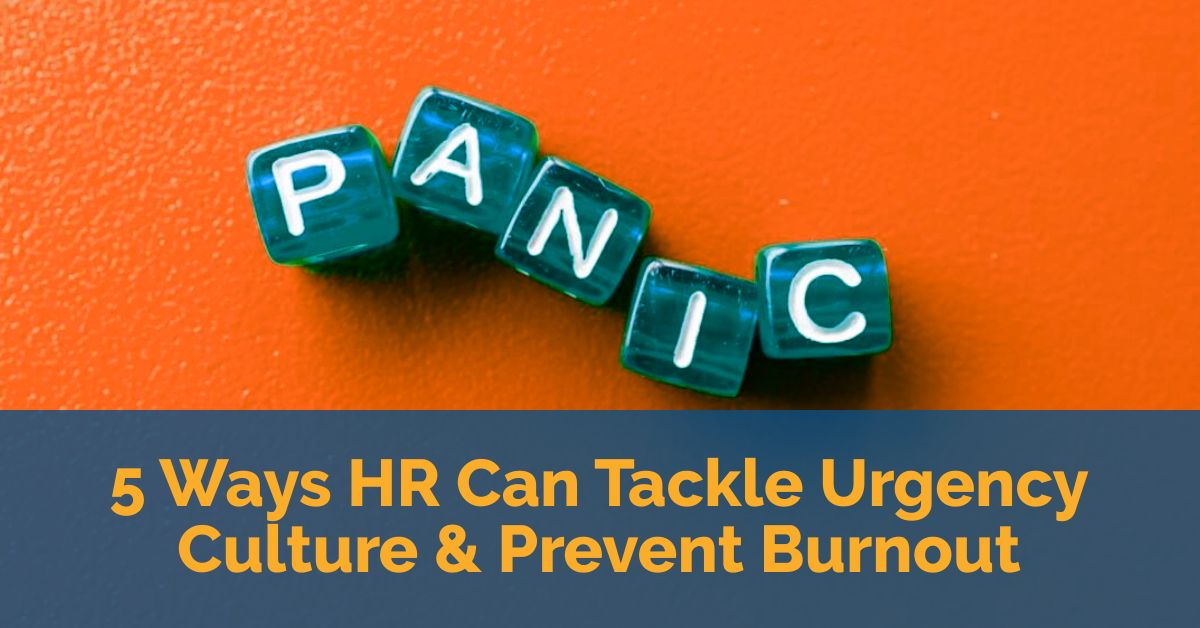
5 Ways HR Can Tackle Urgency Culture and Prevent Burnout
It’s the workplace phenomenon that makes you feel like you’re always behind, even when you’re ahead. It’s that sense of constant busyness where everything is urgent, and your to-do list never seems to shrink. This culture isn’t just stressful; it’s a major contributor to burnout.
According to Dr. Michelle McQuaid, founder of The Wellbeing Lab, urgency culture creates a “hyper-vigilant, stress alarm” environment, leading to high burnout rates. In her 2023 research with AHRI, 54.4% of team members in Australian workplaces reported feelings of burnout, with that figure rising to 68.8% among leaders. Additionally, a 2024 Gallup report found that 48% of Australians experience daily feelings of stress, compared to a 41% worldwide average. HRM online
So, what can HR do to combat this?
1. Conduct Regular Team Check-Ins
Instead of waiting until burnout is evident, proactively check in with your team. Dr. McQuaid suggests having weekly team meetings to assess the balance between job demands and resources. This helps identify signs of urgency culture before it becomes overwhelming. We support teams to implement more effective supervision and performance management strategies that are just tokenistic but make a real impact.
2. Identify the Sources of Urgency
Determine whether the urgency is top-down from executives or bottom-up from team leaders. Understanding the origin allows HR to address the foundational cause, whether it’s unrealistic expectations or a lack of resources. (Talk to us on training for your team around workplace boundaries).
3. Clarify Roles and Expectations
Lack of role clarity can lead to unnecessary urgency as team members try to cover all bases. I see this a lot in workplace conflicts for which I am a mediator.
Dr. McQuaid’s research indicates that lack of role clarity is the most frequently experienced psychosocial hazard for workers who feel burned out. It could be a key risk identifier for your workplace to consider. Australian HR Institute
4. Implement a Time Contingency
Add a 20% time contingency buffer to tasks to account for unexpected complexities. This approach helps manage expectations and reduces stress when tasks take longer than anticipated.
It’s a bit like the under promise and over delivery. If you finish on early or on time it makes the team, feel positive, however, if you don’t, the team won’t feel deflated or pressured.
5. Measure and Monitor Progress
Track metrics like absenteeism, engagement, and productivity to assess the effectiveness of interventions. A decrease in absenteeism and an increase in engagement are positive indicators of reduced urgency culture.
Urgency culture is a significant contributor to burnout, but HR has the tools to address it. By implementing regular check-ins, clarifying roles, and managing expectations, HR can create a healthier, more sustainable workplace culture and reduce workplace conflicts.
Questions for Reflection:
- How does your organisation currently handle urgency culture?
- What steps can HR take to implement these strategies effectively?
- Have any of these been identified as potential risks when developing your policy for psychosocial hazards in the workplace?
Feel free to share your thoughts and experiences in the comments below or continue the conversation on creating healthier workplaces by reaching out to us for a strategy call.
Further reading & references:
Source: 5 ways HR can combat urgency culture in the workplace, By Jonathan Bradley
Check out our upcoming free MASTERCLASSES that focus on how to Feel Good at Work, how to work Better Together, Talk Smart (communication techniques), Mission Control (leadership techniques), Essential Human Skills, and how to Tame Your Time.
If you want to improve your behavioural skills and master the human side of work, book your free strategy session here.
Listen to Podcast Here:
About the Author



